Developed as part of the Shared Success Demonstration, this tool offers guidance for business advisors at CDFIs on how to have conversations with small business owners on job quality improvements. It centers business value and includes a variety of information and resources to assist business owners in addressing poor job quality.
For a guide of resources that complement this tool, see our topic guide on Small Business Job Quality Advising.
These toolkits are designed to eliminate bias across different areas of the workplace, using specific “bias interrupters” that change existing norms and practices to create more equitable workplaces. Toolkits include: Compensation, Hiring and Recruitment, Family Leave, and more. Employers may find this tool useful for developing successful, equitable workplace practices. Additionally, workforce development and worker advocacy professionals may find this toolkit helpful to share with their employer-partners.
This toolkit is a collection of over 60 workplace policies that can help support, stabilize, and retain employees in low-wage work. The toolkit also contains sections on gender-based violence workers may be experiencing in their home lives and second-chance employment for formerly incarcerated individuals After a quick registration for a free account, the Employer Toolkit search feature can help you identify specific policy recommendations, many of which include sample HR policy language that companies can draw from. Topics include wages, benefits, child care, paid time off, scheduling, recruitment, training and education, and transportation.
The document outlines the six principles of Opportunity Employment, which prioritizes equity, inclusion, and opportunity, and mobility within a company while generating business value. The principles are associated with the various stages of Opportunity Employment: strategy and set up, recruiting and hiring, retention and advancement. HR professionals, managers and organization leaders, and practitioners can all benefit from this resource.
This page hosts all of Gallup’s articles and briefs on employee enagegement in the United States and abroad. It includes links to results from Gallup’s various employee engagement and experience surveys. It also includes opinion pieces and advice on improving employee engagement. These resources can be helpful for HR professionals, managers and other organization leaders, researchers, and practitioners interested in understanding employee engagement.
These sets of resources aim to help managers, supervsiors, HR professionals, and employees clarify roles and set goals. Many of these resources help readers consider equitable and inclusive ways of establishing expectations and goals. All resources can be downloaded and include estimate reading times. This also includes paid training from the Management Center for social justice and educational equity leaders and staff. All the other free resources on this page, however, can be helpful for HR professionals, recruiters, supervisors, managers, or employees in any industry.
On this page, there are various tools, templates, and tips for hiring and onboaring new employees. Resources can help recruiters or managers decide what they need in a new employee, mitigate bias during the hiring process, create a recruiting strategy, and properly onboard new hires. All resources can be downloaded and include estimate reading times. This page also includes links to paid training from the Management Center for social justice and educational equity leaders. All the other free resources on this page, however, can be helpful for HR professionals, recruiters, or managers in any industry.
This guide outlines how employers can create an onboarding process that gives employees all the information they need to be productive. The guide draws from HR experts and provides additional resources on creating on onboarding program and an optimal first day for new employees. It also details how human resource teams and upper management can evaluate the onboarding process and shift to employee retention and satisfaction. This guide is intended for employers, human resource leaders, and managers across industries looking to hire new employees for the first time or who are revamping existing onboarding processes.
Today’s politicized environment poses unique challenges for worker rights advocates. With Congress often divided, and many state and local governments as well, the path to improving worker rights through legislation is narrow. Nonetheless, we have seen some remarkable progress on worker rights over the last few years through executive action. Leveraging executive action, however, is not a straightforward and easily discernible path for grassroots activists and organizations interested in advancing worker rights and job quality.
In the “Toolkit: An Organizer’s Guide to Executive Action,” Mary Beth Maxwell, executive director of Workshop, demystifies and democratizes the policy-making process by sharing lessons learned during her time in federal government. Toolkit offers a blueprint for advocates inside and outside on how they can collaborate to build an economy that works for all and, in the process, rebuild a healthy democracy.
This webinar, co-hosted by the Aspen Institute Economic Opportunities Program and Workshop, featured a panel of experienced public servants and organizers. Speakers will dive into the lessons and stories from Toolkit and provide guidance to advocates and organizers striving to advance worker rights.
This training curriculum supports direct care supervisors to strengthen communication, critical thinking, teamwork, and problem-solving skills. Curriculum content includes improving active listening, learning how to ask questions, and giving and receiving feedback. While designed for direct care organizations, this curriculum has applications for practitioners across fields seeking to encourage supportive supervisory practices that are critical to job quality.
